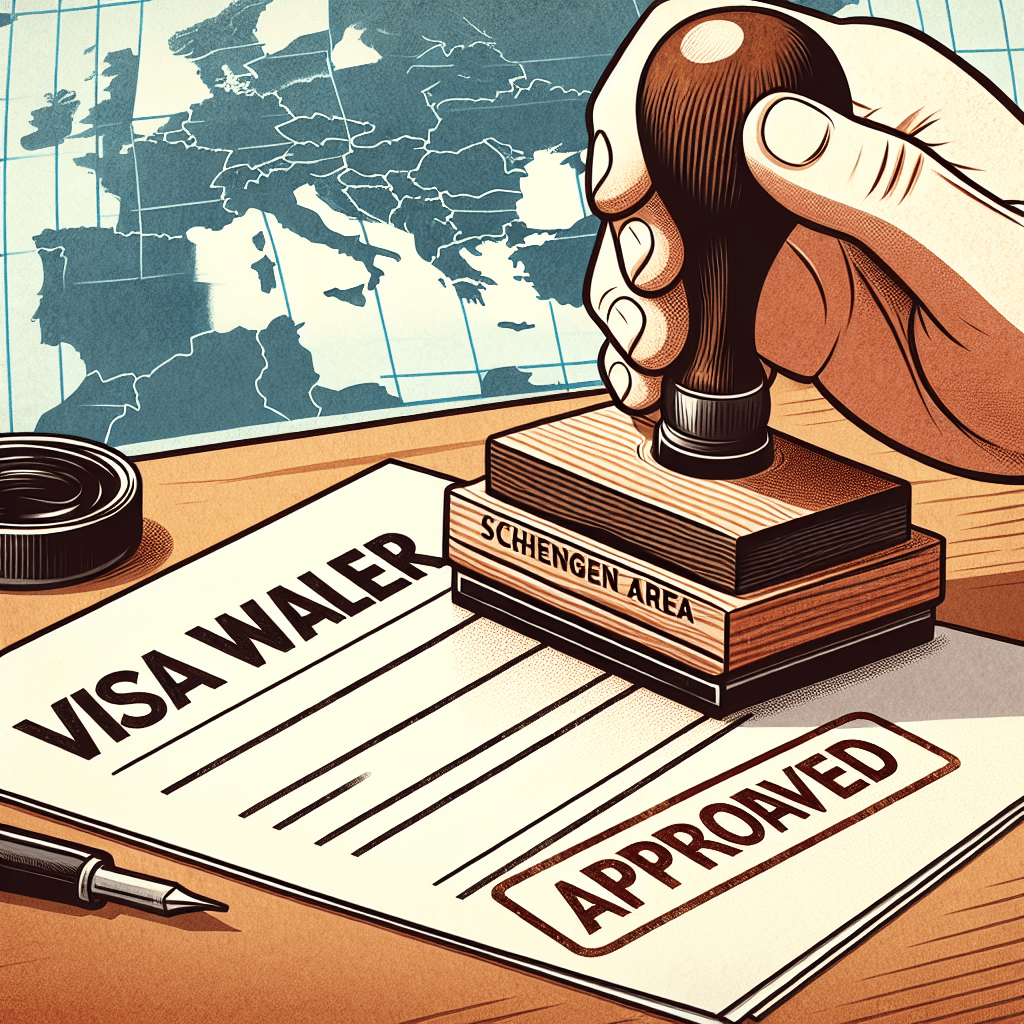ETIAS for Non-EU Citizens: What You Need to Know Before You Go

Traveling to Europe is an exciting prospect for many non-EU citizens, offering a rich tapestry of cultures, history, and landscapes. However, before embarking on your journey, it’s crucial to understand the European Travel Information and Authorization System (ETIAS). This system is a new requirement for travelers from visa-free countries who wish to enter the Schengen Area. Designed to enhance security and streamline entry processes, ETIAS is set to become a vital part of travel planning for millions of visitors.
For non-EU citizens, understanding ETIAS is essential to ensure a smooth and hassle-free entry into the Schengen zone. The system aims to strengthen border control and improve safety across Europe by pre-screening travelers before they arrive. This travel authorization is not a visa but a necessary permit for those who previously enjoyed visa-free travel to Europe. As the implementation of ETIAS approaches, staying informed about its requirements and processes is more important than ever.
Whether you’re planning a vacation, business trip, or family visit, obtaining an ETIAS authorization will be a key step in your travel preparations. To learn more about the ETIAS and how it affects your travel plans, continue reading for a comprehensive guide on what you need to know before you go.

Understanding ETIAS
Definition and Purpose of ETIAS
The European Travel Information and Authorization System (ETIAS) is a pivotal development in the realm of international travel, specifically designed for non-EU citizens who wish to visit the Schengen Area. Unlike a traditional visa, ETIAS is a travel authorization system that facilitates visa-free travel to Europe for eligible travelers. Its primary purpose is to enhance security measures across the Schengen zone by pre-screening travelers before they arrive at the border. This proactive approach aims to identify potential security risks and streamline the entry process for legitimate travelers.
ETIAS serves as a European travel authorization that is mandatory for citizens of countries that currently enjoy visa-free access to the Schengen Area. By collecting and analyzing data from applicants, the system helps EU border control authorities make informed decisions about who can enter the region. This not only bolsters security but also ensures that the Schengen area entry process remains efficient and effective. The introduction of ETIAS reflects a broader commitment to maintaining the safety and integrity of Europe’s borders while facilitating seamless travel experiences for millions of visitors.
ETIAS vs. Traditional Visas
One of the key distinctions between ETIAS and traditional visas lies in their application processes and requirements. While a Schengen visa application involves a more comprehensive and time-consuming procedure, ETIAS is designed to be a quick and straightforward process. Applicants can complete the ETIAS application online, providing essential information such as personal details, travel plans, and background information. This streamlined approach allows for faster processing times, with most applications being approved within minutes.
ETIAS offers several benefits over traditional visas, particularly for travelers seeking short-term visits for tourism, business, or family purposes. It covers a wide range of activities, including leisure travel, business meetings, and short-term study programs. However, it is important to note that ETIAS is not a substitute for a visa in cases where a longer stay or work permit is required. Understanding the differences between ETIAS and traditional visas is crucial for travelers to ensure they meet the appropriate EU entry requirements for their specific travel plans.
Implementation Timeline and Changes
The rollout of ETIAS is a significant milestone in European visa policy, with its implementation scheduled to take place in the near future. The system is expected to be fully operational by 2024, marking a new era in Schengen travel rules. As the implementation date approaches, travelers are encouraged to stay informed about key dates and changes that may impact their travel plans. The introduction of ETIAS represents a shift towards a more secure and efficient European entry system, aligning with broader EU travel regulations.
For non-EU citizens planning to visit the Schengen Area, understanding the timeline and potential impact of ETIAS is essential. The system is designed to enhance the overall travel experience by reducing wait times at border crossings and improving security measures. As travelers prepare for the upcoming changes, staying informed about the latest developments and requirements will be crucial to ensuring a smooth and successful journey to Europe.

Application Process for ETIAS
Step-by-Step Guide to Applying
Applying for an ETIAS is a straightforward process designed to facilitate visa-free travel to Europe for eligible non-EU citizens. The application is completed entirely online, making it accessible and convenient for travelers worldwide. To begin, applicants must visit the official ETIAS website and fill out the online application form. This form requires basic personal information, including full name, date of birth, and nationality, as well as details about your intended travel plans within the Schengen Area.
In addition to personal information, applicants must provide details from their valid passport, which serves as the primary Europe travel document for the ETIAS application. It is crucial to ensure that all information is accurate and matches the details on your passport to avoid any delays or complications. The application also includes a series of security-related questions, designed to assess potential risks and ensure compliance with EU travel regulations.
Once the application is submitted, it undergoes a thorough review by EU border control authorities. Most applications are processed quickly, with approval granted within minutes. However, in some cases, additional information or documentation may be required, which could extend the processing time. To ensure a smooth application experience, it is advisable to apply well in advance of your planned travel dates.
Costs and Validity
The ETIAS application process involves a nominal fee, which is a small price to pay for the convenience of visa-free travel Europe. The fee structure is designed to be affordable, with a standard charge applicable to all applicants over the age of 18. Payment is made online during the application process, using a secure payment gateway. It is important to have a valid credit or debit card ready to complete the transaction.
Once approved, the ETIAS authorization is valid for multiple entries into the Schengen zone travel area over a period of three years or until the expiration of the traveler’s passport, whichever comes first. This extended validity period allows travelers to make multiple trips to Europe without the need to reapply for each visit, provided that each stay does not exceed 90 days within a 180-day period. In the event that your passport expires before the ETIAS, a new application will be required to align with the new passport details.
Common Mistakes and Tips for Success
While the ETIAS application process is designed to be user-friendly, there are common pitfalls that applicants should be aware of to ensure a successful outcome. One of the most frequent mistakes is providing incorrect or incomplete information on the application form. Double-checking all entries for accuracy and completeness is essential to avoid unnecessary delays or rejections.
Another common issue is failing to meet the EU entry requirements, such as having a valid passport with sufficient validity beyond the intended stay. Ensuring that your passport meets these criteria is crucial for a smooth application process. Additionally, applicants should be prepared to answer security-related questions honestly and thoroughly, as discrepancies or omissions can lead to complications.
To enhance your chances of a successful application, it is advisable to apply well in advance of your planned travel dates. This allows ample time to address any issues that may arise during the application process. By following these tips and avoiding common mistakes, travelers can look forward to a seamless and efficient experience when applying for their ETIAS, paving the way for an enjoyable journey to Europe.

Impact on Travel and Tourism
Effects on Travel Planning
The introduction of ETIAS represents a significant shift in travel planning for non-EU citizens, particularly those accustomed to visa-free travel Europe. With the implementation of this European travel authorization, travelers must now incorporate additional steps into their pre-travel preparations. This includes applying for ETIAS well in advance of their intended departure date to ensure compliance with the new Schengen travel rules. As a result, travelers may need to adjust their timelines and consider the processing time for their ETIAS application when planning their trips.
For many, the requirement to obtain an ETIAS may initially seem like an added layer of complexity. However, it is important to view this as a necessary measure to enhance security and streamline the Schengen area entry process. By understanding the requirements and preparing accordingly, travelers can ensure a smooth transition to the new system. This includes familiarizing themselves with the EU entry requirements and ensuring that all necessary documentation, such as a valid passport, is in order before applying for the ETIAS.
Broader Implications for Global Tourism
The implementation of ETIAS is poised to have broader implications for global tourism, influencing international travel trends and industry practices. As travelers adapt to the new European entry system, there may be shifts in travel patterns, with some opting for destinations outside the Schengen zone travel area to avoid the additional requirements. However, for many, the allure of Europe’s rich cultural heritage and diverse attractions will continue to draw visitors, even with the new travel authorization in place.
In response to these changes, the travel industry is expected to adapt by providing additional support and resources to assist travelers in navigating the ETIAS application process. This may include offering guidance on the application procedure, clarifying EU travel regulations, and ensuring that travelers are well-informed about the requirements for their journey. By proactively addressing these challenges, the industry can help mitigate any potential disruptions and continue to promote Europe as a premier travel destination.
Expert Insights and Opinions
Travel industry professionals have offered a range of insights and opinions on the long-term influence of ETIAS on global travel. Many experts view the system as a positive development, emphasizing its role in enhancing security and facilitating more efficient border control processes. By pre-screening travelers, ETIAS helps to identify potential risks and ensure that those entering the Schengen Area meet the necessary criteria, ultimately contributing to a safer travel environment.
Forecasts on the long-term impact of ETIAS suggest that while there may be initial adjustments required, the system will ultimately lead to a more streamlined and secure travel experience. As travelers become more familiar with the requirements and processes, the transition to ETIAS is expected to become a routine part of travel planning. By staying informed and prepared, travelers can continue to enjoy the benefits of exploring Europe, while contributing to the overall safety and security of the region.
Simplify Your Travel with SimpleVisa
Fast & Easy Visa Applications
Navigating the complexities of international travel authorizations can be daunting, but SimpleVisa simplifies the process for you. Whether you’re applying for ETIAS or a traditional visa, SimpleVisa offers a streamlined, user-friendly platform that ensures a smooth and hassle-free application experience. Their expert guidance and efficient processing save you time and stress, helping you get your travel documents with ease.
🔹 Ready to apply? Get started now with SimpleVisa and secure your travel authorization in just a few clicks!

Conclusion
As the European Travel Information and Authorization System (ETIAS) becomes an integral part of travel to the Schengen Area, it is essential for non-EU citizens to understand its implications and requirements. This system, designed to enhance security and streamline the entry process, represents a significant shift in how travelers approach their journeys to Europe. By requiring a European travel authorization, ETIAS aims to pre-screen visitors, ensuring that they meet the necessary EU entry requirements and contribute to the safety of the region.